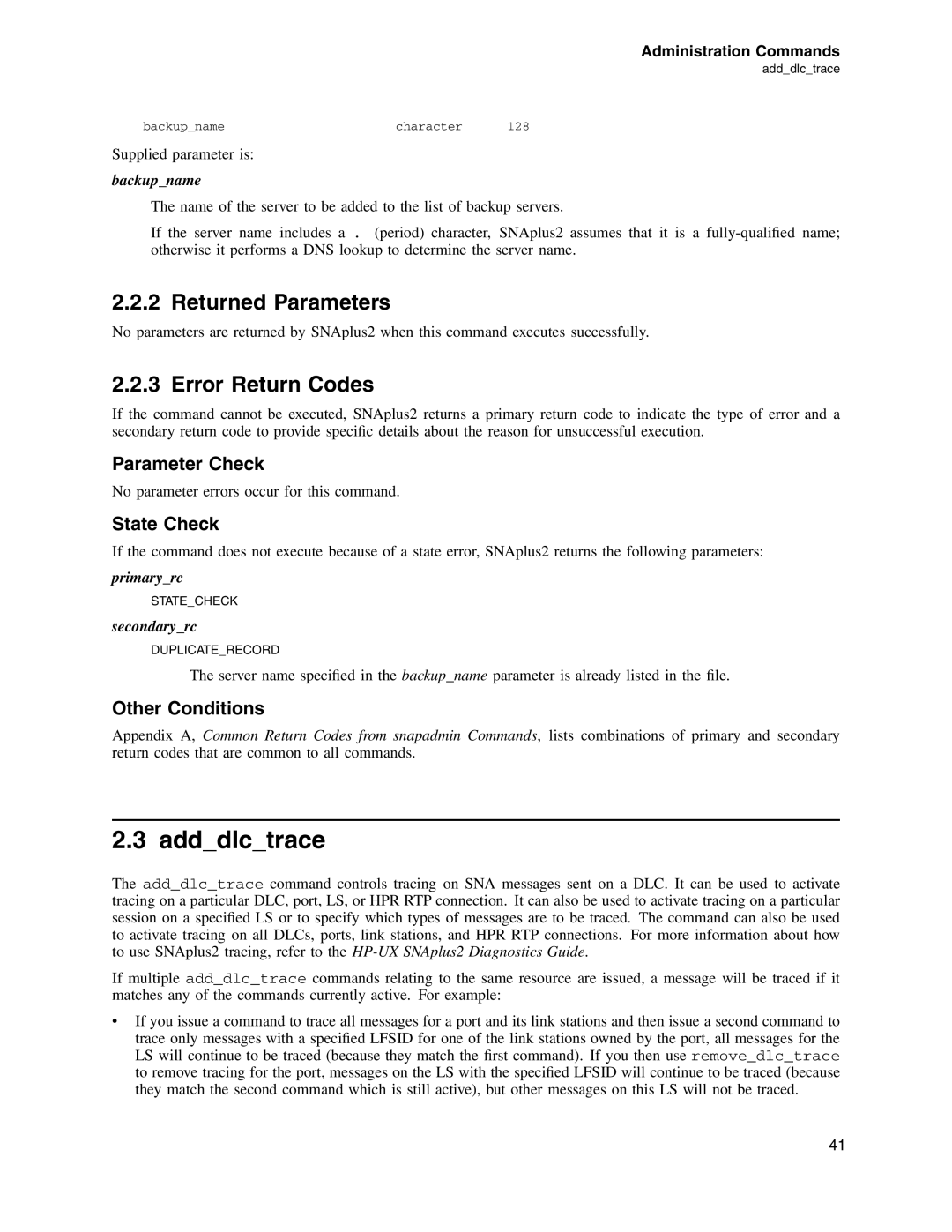Administration Commands
add_dlc_trace
backup_name | character | 128 |
Supplied parameter is:
backup_name
The name of the server to be added to the list of backup servers.
If the server name includes a . (period) character, SNAplus2 assumes that it is a
2.2.2 Returned Parameters
No parameters are returned by SNAplus2 when this command executes successfully.
2.2.3 Error Return Codes
If the command cannot be executed, SNAplus2 returns a primary return code to indicate the type of error and a secondary return code to provide specific details about the reason for unsuccessful execution.
Parameter Check
No parameter errors occur for this command.
State Check
If the command does not execute because of a state error, SNAplus2 returns the following parameters:
primary_rc
STATE_CHECK
secondary_rc
DUPLICATE_RECORD
The server name specified in the backup_name parameter is already listed in the file.
Other Conditions
Appendix A, Common Return Codes from snapadmin Commands, lists combinations of primary and secondary return codes that are common to all commands.
2.3 add_dlc_trace
The add_dlc_trace command controls tracing on SNA messages sent on a DLC. It can be used to activate tracing on a particular DLC, port, LS, or HPR RTP connection. It can also be used to activate tracing on a particular session on a specified LS or to specify which types of messages are to be traced. The command can also be used to activate tracing on all DLCs, ports, link stations, and HPR RTP connections. For more information about how to use SNAplus2 tracing, refer to the
If multiple add_dlc_trace commands relating to the same resource are issued, a message will be traced if it matches any of the commands currently active. For example:
•If you issue a command to trace all messages for a port and its link stations and then issue a second command to trace only messages with a specified LFSID for one of the link stations owned by the port, all messages for the LS will continue to be traced (because they match the first command). If you then use remove_dlc_trace to remove tracing for the port, messages on the LS with the specified LFSID will continue to be traced (because they match the second command which is still active), but other messages on this LS will not be traced.
41
